In 2016 we camped at Canisbay in Algonquin Park for a couple of weeks in the summer. While we were there we decided to check the Cache Lake area which is just on the south side of Highway 60, very close to our campground, at kilometer 23.5. Cache Lake is the #8 canoe access point in the park, but it is also where visitors to the Barlett Lodge park while staying across the lake.
There is also a short self-guided interpretive walk that features signs and the remains of the railroad and the Highland Inn. 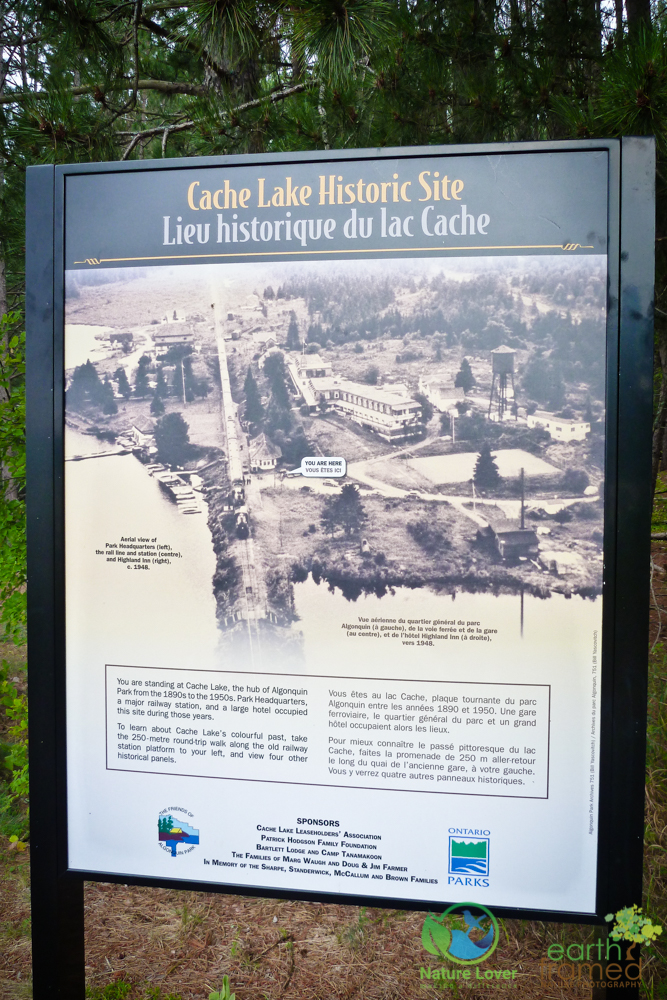
The first panel gives a fantastic view of what the area looked like “in its prime”. This part of the park was considered to be the ‘hub’ from the 1890’s to the 1950’s. There was the Highland Inn, which was a resort that operated year-round, a railroad station, and park offices. The park became so poplar that the inn had to be enlarged for the increased number of summer guests. 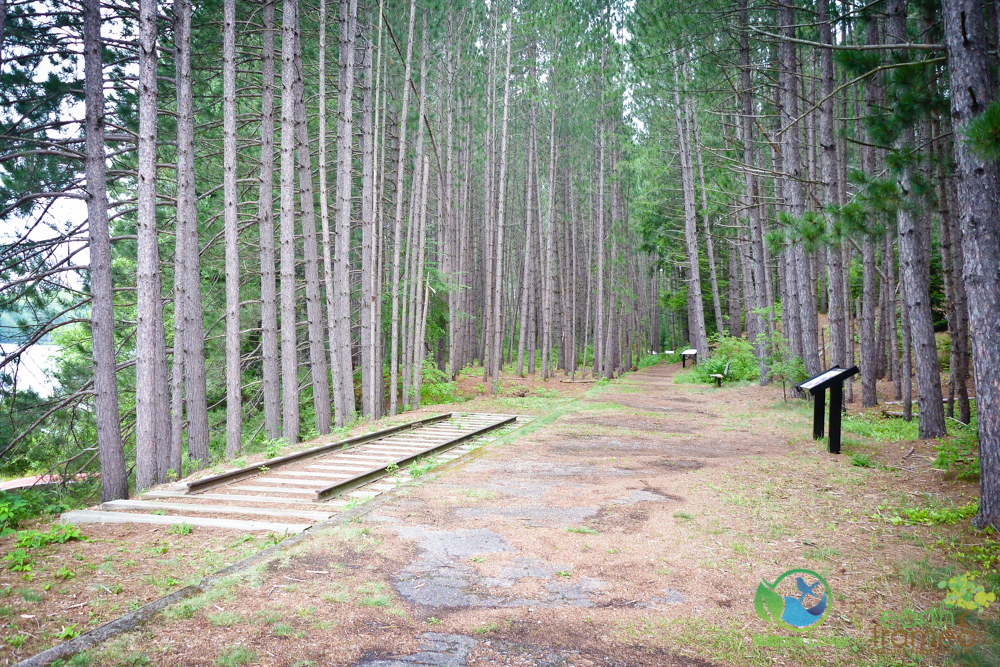
The train basically ran right to the front door of the hotel and visitors could easily make connections from Toronto or Ottawa. Only a small portion of the rail was kept intact for historical purposes.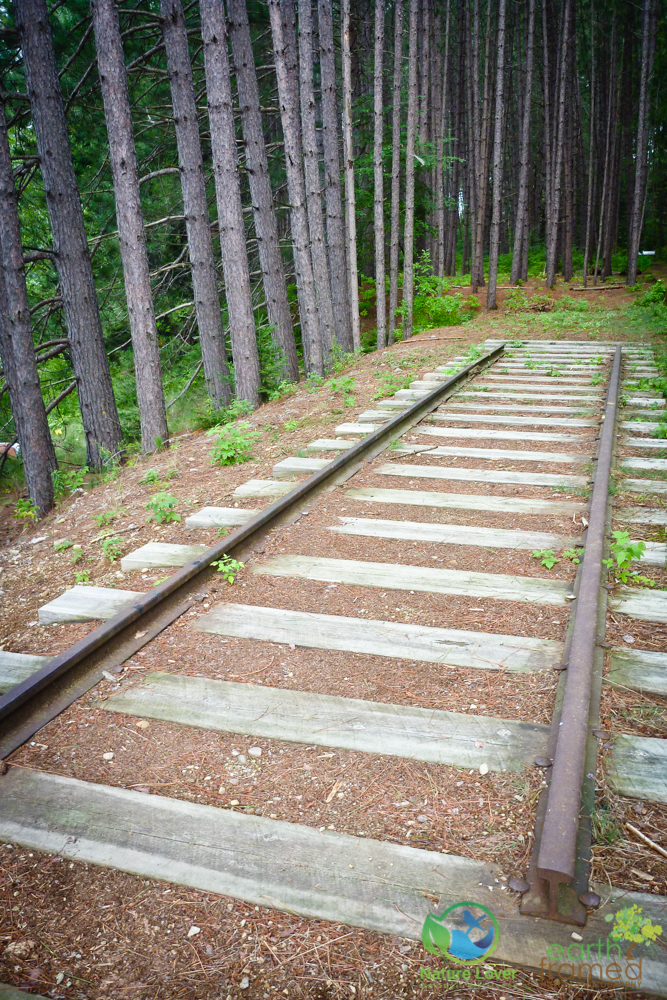
Mass red pine plantings were obviously made after the hotel was dismantled and burned in 1956.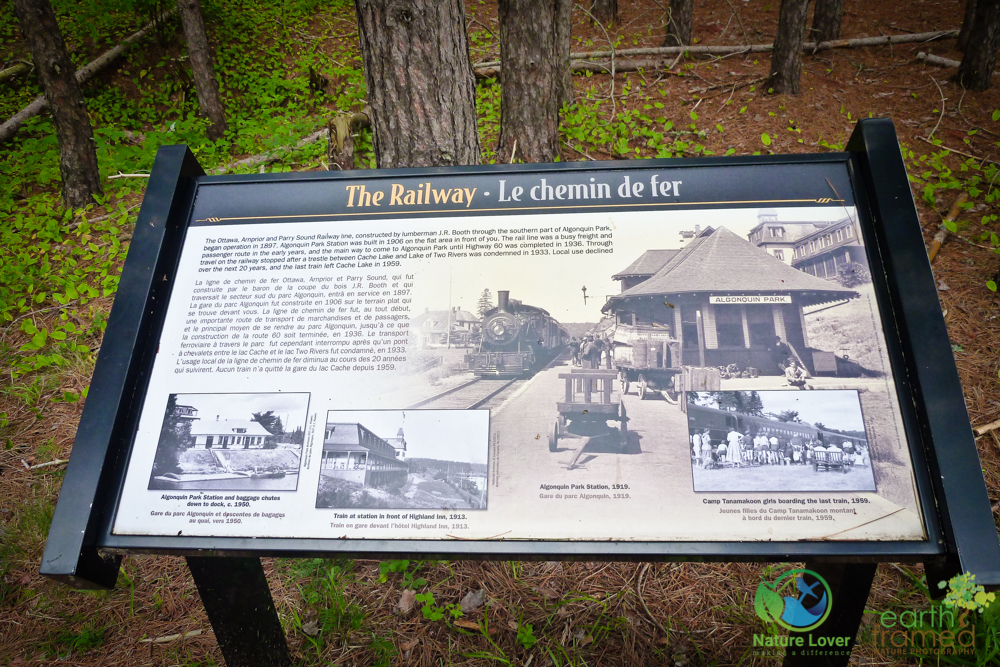
Another sign focuses primarily on the railway and shows pictures of the rail and surrounding buildings throughout the decades.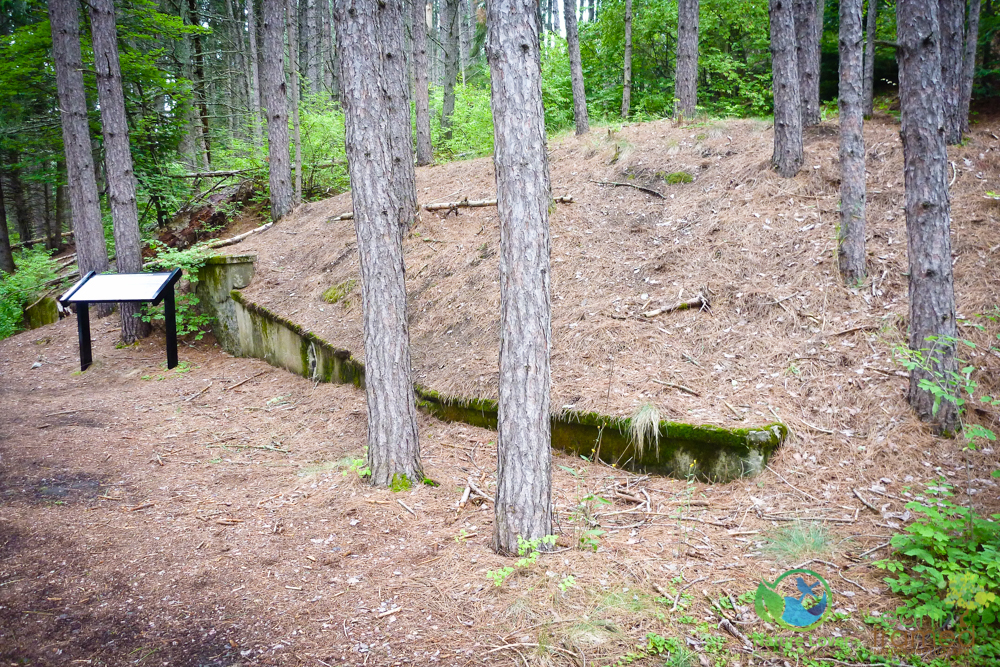
Here you can see park of a retaining wall that is weathering and becoming covered by earth, moss and pine needles.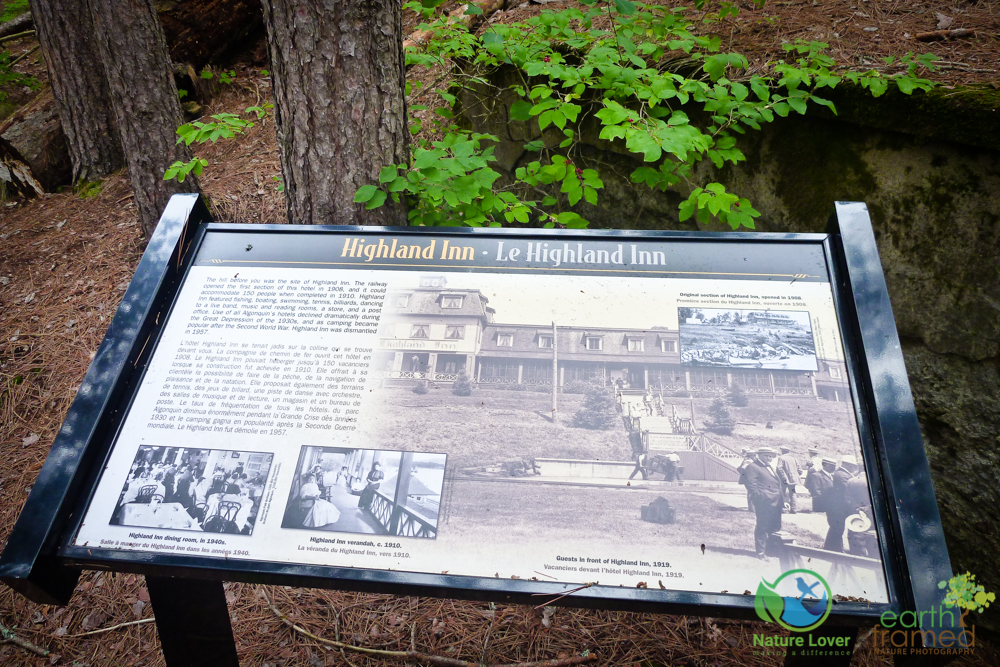
The Highland Inn, after it was enlarged in 1913, had a three-story central tower, an addition to the east side and an entire new west wing was built. None of the additions were winterized though. After the additions the inn had a total of 11 rooms with baths and 61 without. 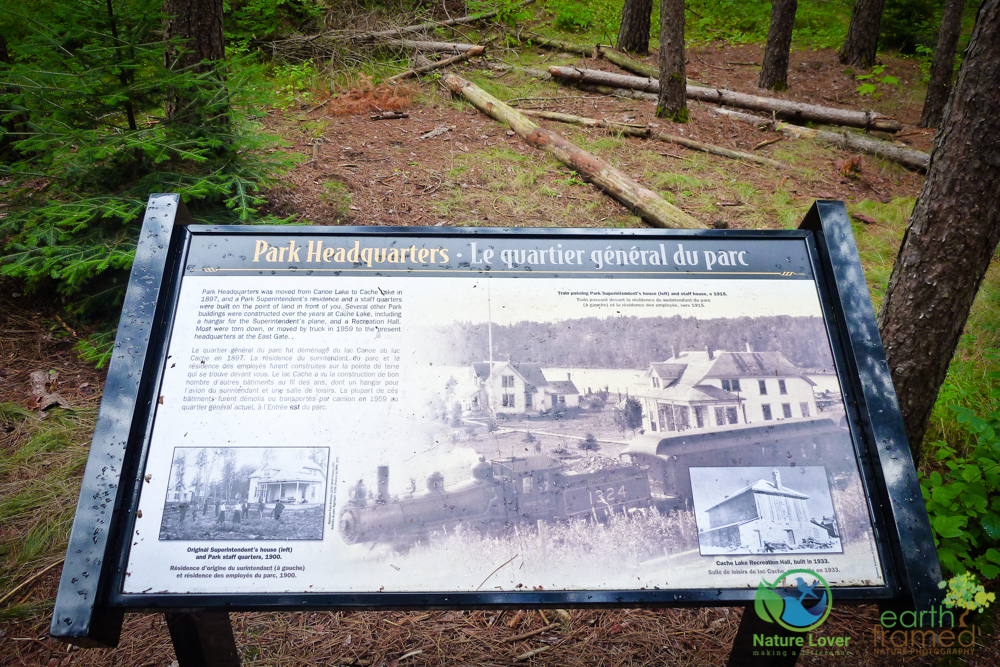
The superintendent of the park, and other park staff, lived here as well. Below you can see some of the buildings and staff from 1900.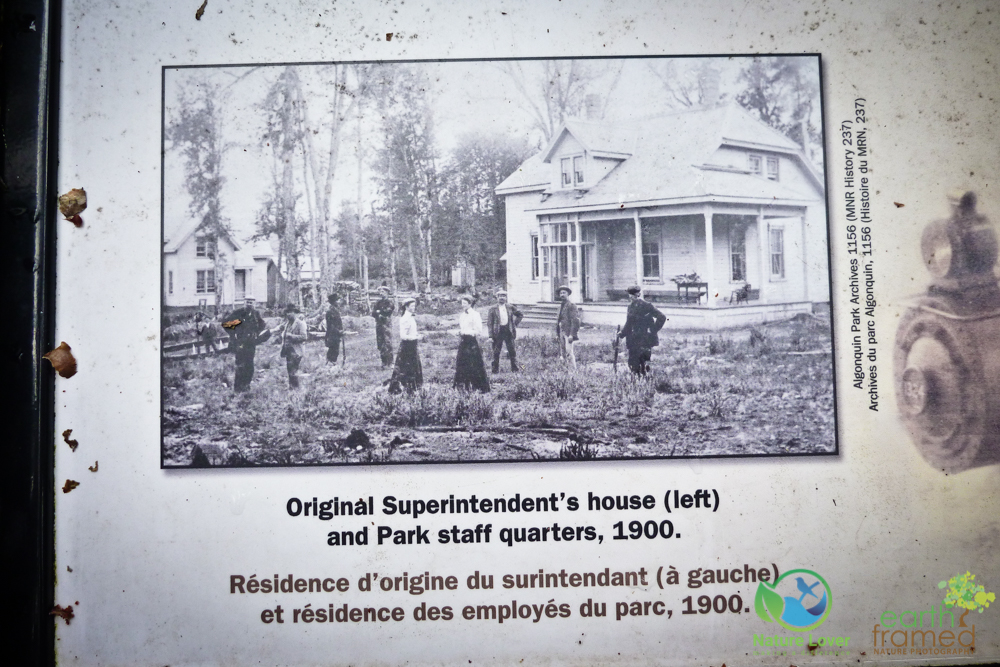
This images, and others, can also be found online at the Algonquin Park Archives and Collections website. At the site you’ll be able to search for images of physical artifacts and images that relate to the park. The content on the site is for viewing only and can not be used with consent.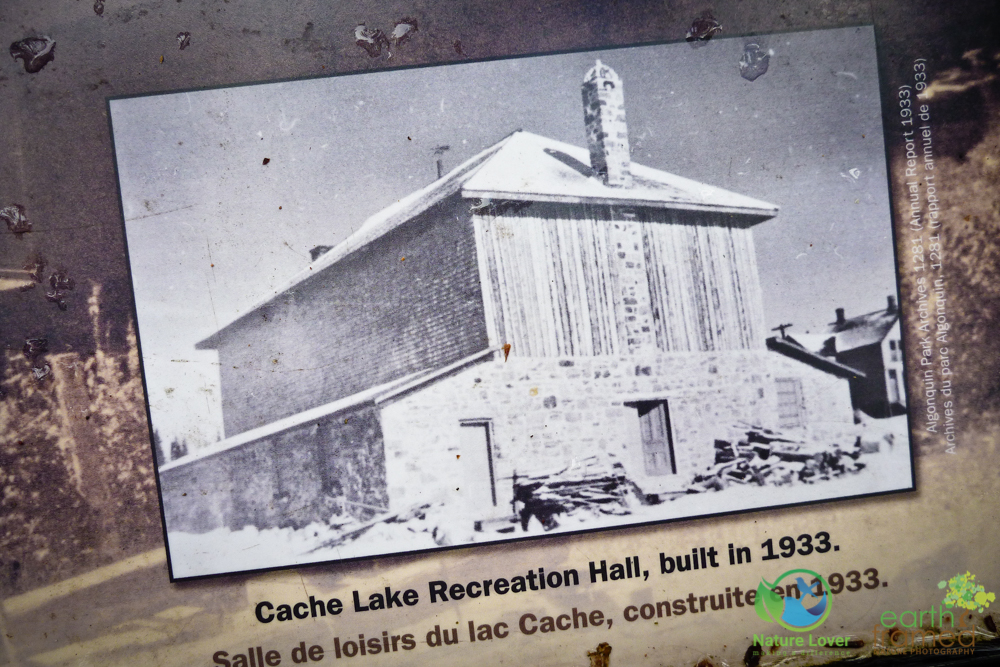
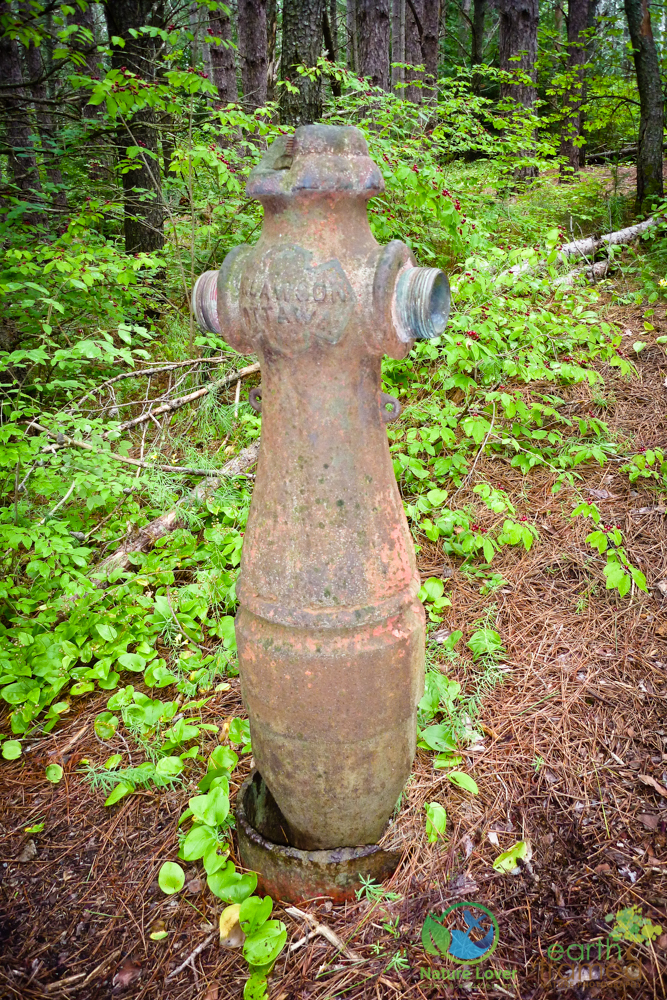
One of the old water hydrants that supplies water to the hotel. There were also standpipes that were used to service the steam locomotives.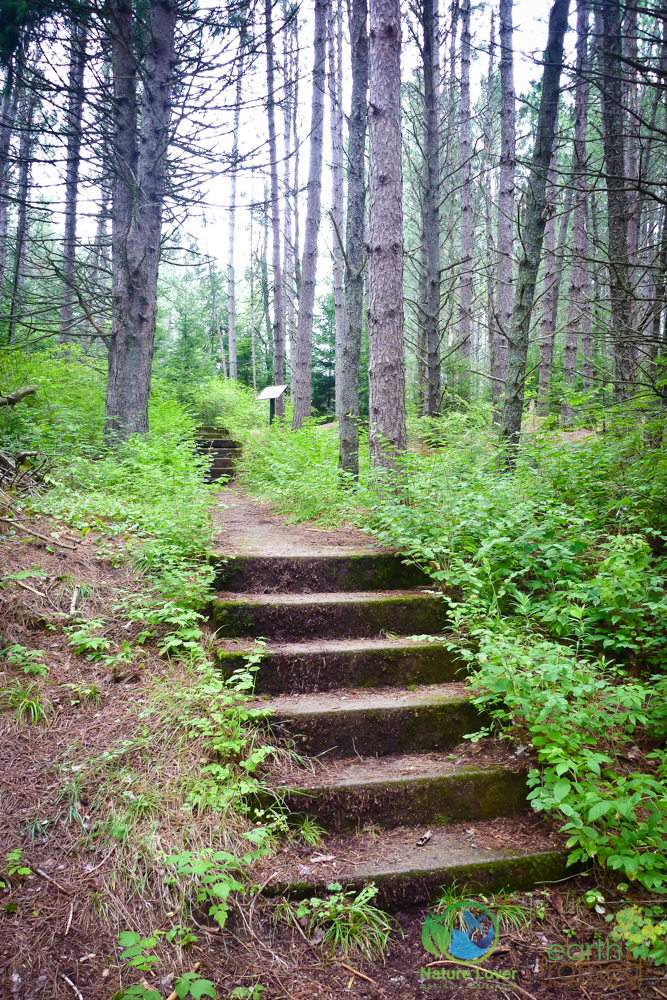
The old staircase up to the hotel is still in good condition. Can you see it in the old postcard below?
 The postcard was produced by the CNR back in 1925 to promote the Highland Inn and the other camps that the railway operated.
The postcard was produced by the CNR back in 1925 to promote the Highland Inn and the other camps that the railway operated.
There are several other interpretive signs to read during the walk and you can also continue to walk down a narrow trail that leads to a road. We have found that area to be full of birds during the early mornings.


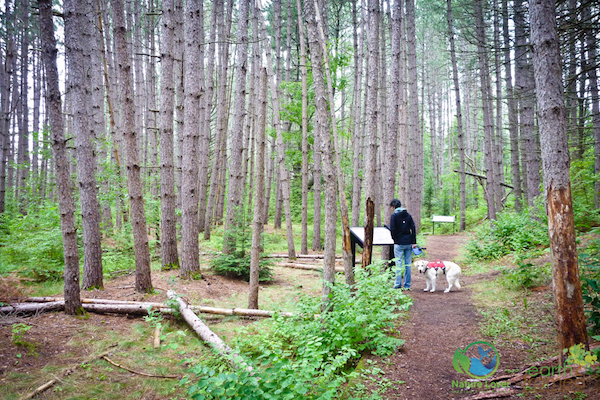
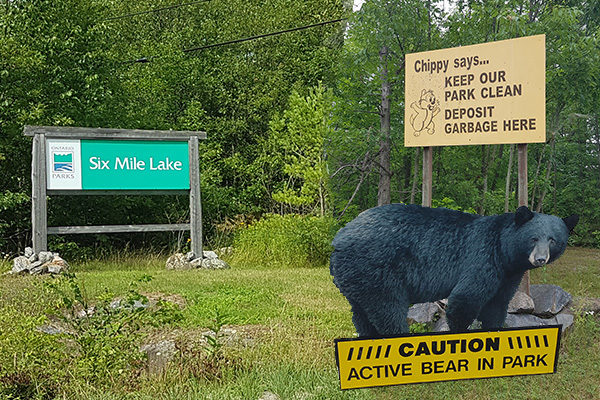
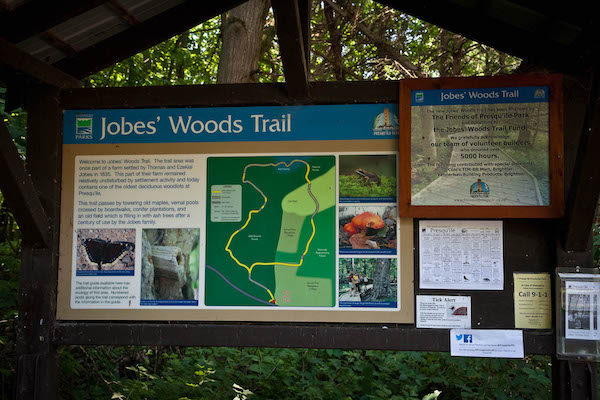
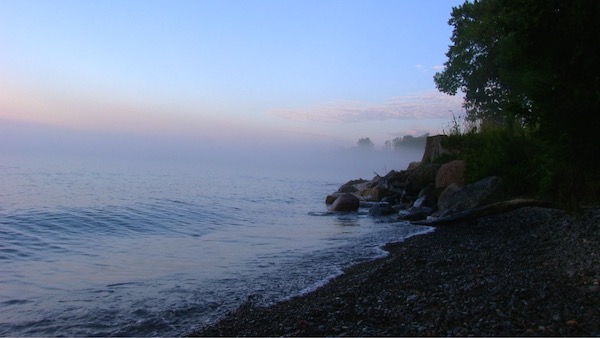
Comments(2)
Garry Paget says:
February 25, 2021 at 9:10 amGood morning NL(s),
I enjoyed your very interesting post on Highland Inn history and the area adjacent to Cache Lake. Like the Canisbay campground, where we held a Paget Family Reunion (Sept 2015 & 2016) around the stone firepit, it is a beautiful area and one that needs to be visited, in person, to truly appreciate. As I look at your photos, I am reliving that smell of moist, aging pine needles and fresh air. Delicious!! Highland Inn was purchased by my great uncle “Charlie” Paget, using profits from his invention (known as the Paget Grain Door) and reopened in 1937. A well as his business, it was meant to provide employment for his sons, my cousins, Ed and Norm Paget who took over ownership and property lease, just prior to Charlie’s death in July, 1940. The rails and ties are not originals from the era but were installed by steam train enthusiasts from Bracebridge, I believe.
A “well done” to you both and thank you for this excellent piece of Algonquin Park and Paget history. I have more info should you be interested. I’m looking forward to exploring the rest of your blog.
Garry Paget
https://burnstownpublishing.com/product/destination-algonquin-park-tracks-to-cache-lake-and-the-highland-inn/
Tricia McLellan-Dath says:
August 25, 2021 at 11:27 amWe are so glad you enjoyed the post and thanks for adding to the history and story of the place.